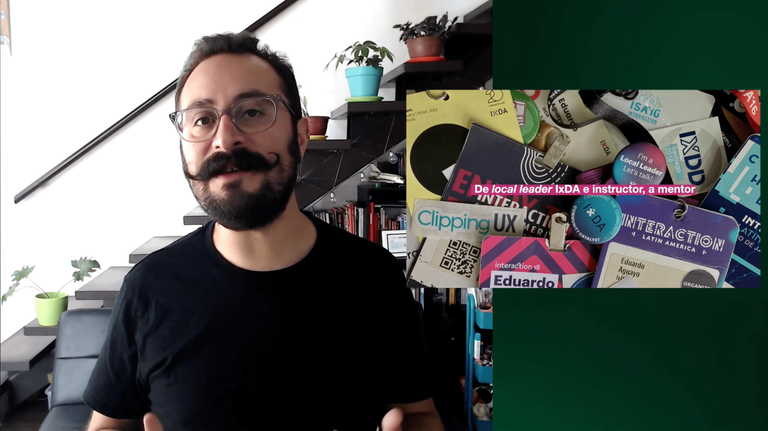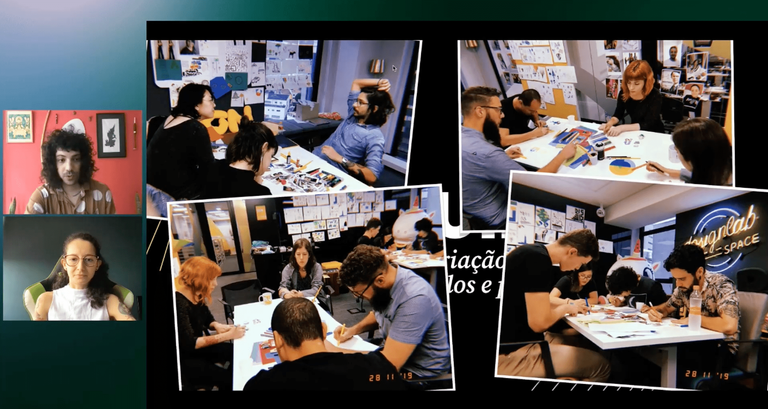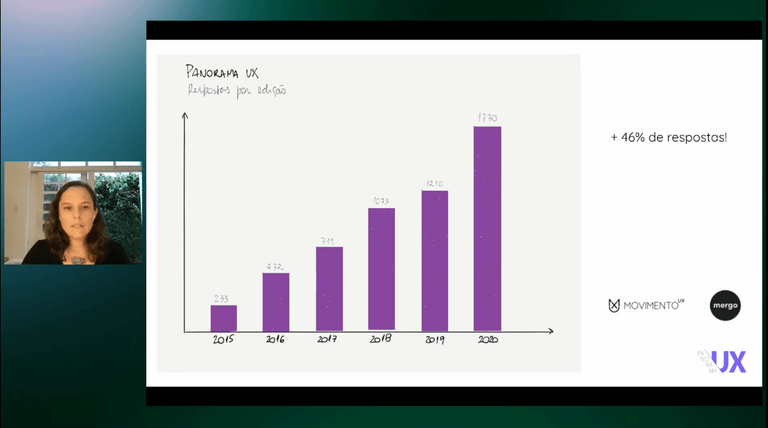ILA 21 - Event Recap by Victor Santos on January 04, 2022
4 Min Read

In the midst of the COVID-19 pandemic, IxDA managed to carry out the ILA 21, Interaction Latin America, virtually and presented directly from Costa Rica between the 10th and 12th of November.
This year 100% of the event's speakers this year were from Latin American regions. This gave fresh insight to the work developed by local designers, in addition to being able to meet and connect with those in the Latin design community.
During the three-day event, there were just over 35 talks presented by 74 passionate speakers about their experiences. A lot of content was condensed into a single event-- these were the highlights of some of my favorites:
Learning experiences as a UX mentor in Latin America: the truth of the matter as a UX/UI junior, and its usability
Eduardo Aguayo
Eduardo started offering UX mentoring services in early 2021 and already has logged over 100 hours of mentorship. It all started after his restlessness with the market for courses and bootcamps in the field of Design that created false expectations for less experienced designers.
He realized that the professionals trained by these courses were not prepared to meet the needs of the demands current design market. Therefore resulting in vacancies with criteria not aligned with the area or with the level sought by recruiters.
In his mentorships, Eduardo seeks to guide less experienced designers on issues such as:
- Design career path;
- Portfolio review;
- Negotiation of vacancies and promotions;
Eduardo reinforces that less experienced designers must be diligent not to fall into the fallacy of malicious design courses and encourages more experienced designers to share their learning and offer to mentor when possible. There is no magic formula to work as a UX designer, nor are there recipes for success. What works for a certain professional in a certain context may not work for another designer, it is up to each one to adapt to their needs in that reality.
Watching Eduardo's trajectory and how he helped less experienced designers to position themselves in the market, I was motivated to contribute and support my teammates in a more active way. Small and structured actions can be an important factor in a person's professional development.
Illustrating the real Brazilian fintech users
Bernardo Abreu, Thamy Almeida
Building an illustration system capable of representing the diversity of Brazilians who are spread over a vast territory was the great challenge that the team of designers at Fintech in Brazil, Pagseguro, faced for 2 years. The project took a completely user-driven approach and sought to understand how users would like to be represented and encompass the ethnic and cultural variety of the Brazilian population.
Bernardo and Thamy's main challenge was to create an illustration system that was scalable and above all aligned with the brand's values. They presented the project into 3 phases:
- Exploratory and generative
The phase sought to understand the perceptions of users about the illustrations already available in the product and proximity to customers. This phase also saw the generation of alternatives in co-creation sessions with other designers and other important departments for the project, such as Marketing and Sales.
- Analysis and validation
Here, an attempt was made to understand, through qualitative research, whether the illustration styles generated in the previous phase helped designers understand whether users felt connected to the illustrations.
- Refinement
In this last phase, the designers reflected on the data that were made in the previous phases to refine the library to better represent the users they were designed for.
In conclusion, Thamy and Bernardo stated that the project had very positive impacts and that users felt represented in characters that reflect Brazilian diversity and this particular talk was very helpful to me as it discussed a problem I was experiencing at Liferay, we needed to build an illustration system, to be used by the Marketing Department, that would represent the use cases and the versatility of the products we offer. Being introduced to such a complete and well-documented process helped me to understand which tools to use in the process of developing a complex system and how I can contribute to improving our illustrations.
For those interested in knowing more, the complete project is available at Medium.
Panorama UX - the digital design market in Brazil during the pandemic
Carolina Leslie
What has changed in the UX work routine with the pandemic? That was the question that the sixth edition of Panorama UX sought to answer.
In her lecture, Carolina, presented the face of Brazilian design in the year 2020, during the COVID pandemic and all the changes that came with it. The first edition of this one was in 2015, with 233 responses, the number of participants is only growing and today it has the response of 1770 designers distributed mainly in the South, Southeast and Northeast regions.
At first, the research reveals all the great dilemmas that we can still see in the national market, such as:
Low racial distribution, where 73% of the professionals who responded to the survey declare themselves white;
Differences in remuneration based on gender, where men receive an average of R$1,800.00 more;
Deficit of designers in more entry-level positions, such as interns and juniors.
The Panorama also points to excellent percentages reinforcing the strength that design has in the technology market and how the scenario in the area is becoming more attractive and optimistic:
Low rate of unemployed professionals, only 2%. A lot becomes much more optimistic when compared to the general percentages of the Brazilian market.
More hiring in the sector;
The trend of a salary increase of R$ 1,300.00, meaning that the Product Designer receives an average of R$ 7,200.00.
Finally, Carolina talks about the main findings of the research, contrary to the Brazilian economic scenario, the digital design market is growing fast and this contributes to an increase in competition for talent and shortage of labor, that is, more job opportunities.
Conclusion
In addition to the topics covered in the lectures I mentioned above, ILA 21 addressed important points such as UX Writing, Service Design, Interface, and Research; all this through a perspective of diversity and inclusion. At the event, even though it was completely remote, I was able to connect with other designers and their work, I was introduced to design with the strength of South America and I was able to recognize myself as part of this group.
Furthermore, thank you ILA 21 for the amazing event!


